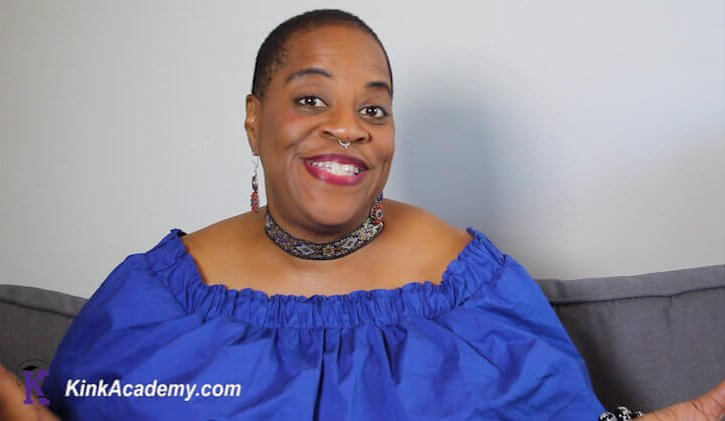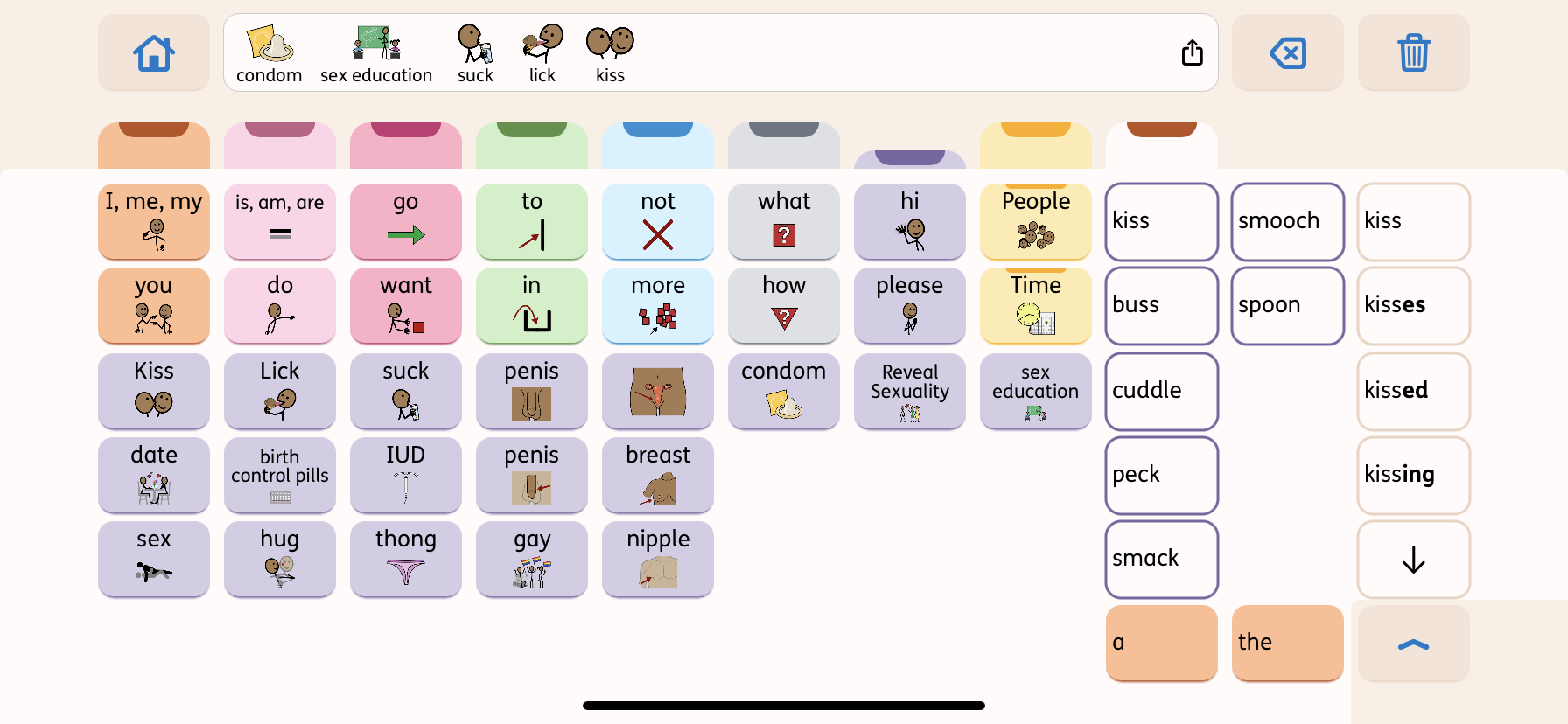If you are thinking about practicing BDSM with a disability, educate yourself. Talk to your partner and prepare in advance so that you can stay safe and enjoy the experience.
BDSM is an acronym that stands for bondage and discipline, dominance and submission, and sadism and masochism. It’s a form of consensual sexual expression and power exchange that involves various activities, such as restraint, spanking, and role-playing. BDSM is often referred to as the “kink” community, and its members engage in a wide range of activities that may involve pain, humiliation, and/or domination.
In terms of people with disabilities, it’s important to recognize that disability is a diverse experience that can include physical, sensory, intellectual, and mental health impairments. Some people with disabilities may be involved in the kink community, just like anyone else, while others may not be interested or may face barriers to participation.
It’s worth noting that BDSM can be a consensual and empowering way for people with disabilities to explore their sexuality and relationships, especially if they face discrimination or societal stigma around their bodies or identities. However, it’s also important to ensure that any BDSM activities are safe and consensual for all involved, and that accommodations are made as needed to address disability-related needs or limitations.
Disability and kink community history
The history of disability and the kink community is complex and multifaceted. BDSM has been around for centuries, but its intersection with disability has only recently gained more visibility and recognition. Here are a few key moments in the history of disability and the kink community:
- The Disability Rights Movement: In the 1960s and 1970s, the disability rights movement emerged in the United States, advocating for equal rights and access for people with disabilities. This movement helped pave the way for greater recognition of disability as a legitimate aspect of identity and sexuality.
- Disability and Sexual Liberation: In the 1980s and 1990s, the disability rights movement began to intersect with the sexual liberation movement, as disabled individuals began to assert their right to sexual expression and exploration. This led to the development of resources and communities for disabled individuals interested in kink and BDSM.
- The Americans with Disabilities Act: In 1990, the Americans with Disabilities Act (ADA) was passed, which mandated equal access to public accommodations, including sex clubs and other adult entertainment venues. This helped to ensure that disabled individuals could access kink and BDSM communities without facing discrimination or barriers.
- Disability and BDSM Education: In recent years, there has been a growing movement of educators and activists who specialize in providing resources and education on BDSM and disability. This includes workshops, books, and online resources that provide information on how to engage in kink and BDSM safely and consensually, with accommodations and considerations for disabled individuals.
Today, there is a growing awareness of the intersection of disability and kink within the BDSM community, with many individuals and organizations working to create more inclusive and accessible spaces for all. However, there is still much work to be done to ensure that disabled individuals are fully included and respected within the kink community.
Talk to your healthcare provider about any risks and seek out sex educators who can give safety and sexual health information for practicing BDSM with a disability.
Kink and disability educators

There are several kink and disability sex educators who specialize in providing resources and education on practicing BDSM with a disability. Here are a few that you may find helpful:
- Robin Wilson-Beattie – a disability awareness and sexuality educator who speaks and writes about sex and disability, including BDSM and kink.
- Eva Sweeney – a disability activist and writer who writes about sex and disability, including their own experiences with kink and practicing BDSM with a disability, cerebral palsy.
- Andrew Gurza – a disability awareness consultant and sex educator who provides workshops and resources on disability and sexuality, including kink and BDSM. Andrew Gurza has also appeared in porn for the gay male studio Himeros TV.
- Sinclair Sexsmith – a writer and educator who specializes in queer and kinky sex, with a focus on accessibility and inclusivity for people with disabilities.
- Devyn Stone – a writer, educator, and advocate for disability and sexuality who provides resources and workshops on practicing BDSM with a disability as well as information on kink for disabled individuals and their partners.
These are just a few examples of kink and disability sex educators who provide valuable information and resources on the topic.
Kinky chat and BDSM with a disability
Kinky chat can be a part of BDSM, depending on how it’s defined and approached. BDSM is a broad term that encompasses a wide range of activities, relationships, and communities that involve power exchange, consensual play, and seal expression. Within this framework, kinky chat can be a form of communication or play that helps establish and negotiate boundaries, roles, and desires between partners.
For example, some BDSM relationships may involve online or text-based communication that sets the stage for in-person scenes or play. This can include negotiating terms and limits, sharing fantasies and desires, or engaging in role-playing or other forms of verbal exchange. In this context, kinky chat can be seen as an integral part of BDSM play, helping to establish trust, connection, and mutual understanding between partners.
Be sure to talk about any triggering words or how your may let your partner know you need to stop a BDSM scene, before you start.
Discussing BDSM roleplay interests and agreements before engaging in practice is crucial for several reasons:
- Establishing Boundaries: BDSM roleplay often involves exploring power dynamics, which can be intense and emotionally charged. By discussing interests and limits beforehand, both partners can establish clear boundaries and expectations for the scene, which can help prevent misunderstandings, hurt feelings, or unsafe situations.
- Building Trust: BDSM roleplay requires a high degree of trust between partners. By openly and honestly discussing their desires, limits, and expectations, partners can build a foundation of trust and mutual understanding that can help them feel safe and secure during the scene.
- Ensuring Consent: Consent is an essential part of any BDSM activity, and discussing interests and agreements beforehand is a crucial part of obtaining informed and enthusiastic consent. By discussing desires, limits, and expectations in advance, both partners can ensure that they are comfortable and fully consenting to the scene.
- Negotiating Roles: BDSM roleplay often involves assuming specific roles or personas, such as dominant or submissive. By discussing these roles beforehand, partners can negotiate the terms and expectations of the scene, which can help ensure that both partners feel respected and empowered throughout the experience.
- Planning for Safety: BDSM roleplay can involve physical or emotional risk, and discussing interests and agreements beforehand can help partners plan for safety and risk mitigation. This can include discussing safe words or signals, planning for aftercare, and identifying potential hazards or triggers that may need to be addressed.
Discussing BDSM roleplay interests and agreements before engaging in practice is an essential part of establishing a safe, consensual, and enjoyable experience for both partners. It can help build trust, ensure consent, establish boundaries, negotiate roles, and plan for safety and risk mitigation.
You may also be interested in reading: BDSM Resources for New and Experienced Kinksters at Kinky Chat Blog.
Last updated on March 23, 2023


